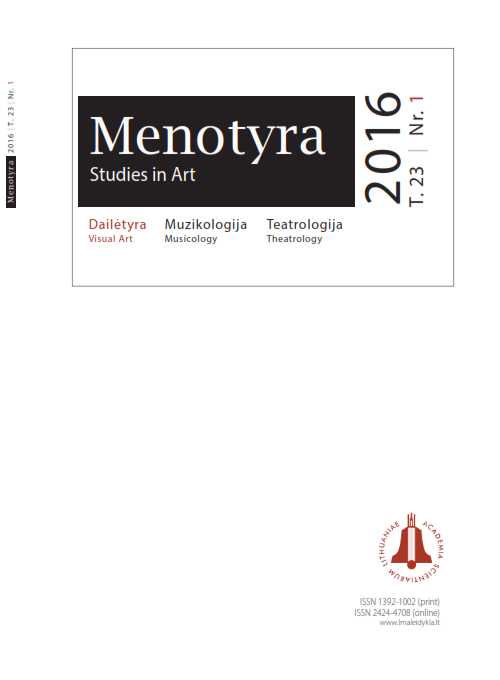XIX a. pab. – XX a. pr. lietuviški religiniai paveikslėliai ir jų
leidėjas Juozapas Angrabaitis (1859–1935)
Lithuanian devotional images of the late 19th – early 20th century and their publisher Juozapas Angrabaitis (1859–1935)
Author(s): Skirmantė Smilingytė-ŽeimienėSubject(s): Christian Theology and Religion, Fine Arts / Performing Arts, Visual Arts, Theology and Religion
Published by: Lietuvos mokslų akademijos leidykla
Keywords: devotional images; religious pictures; contrafaction; iconography; Juozapas Angrabaitis; book smuggler; publisher;
Summary/Abstract: For the first time, the article discusses the marginalia in the art and writings – catholic devotional images, which were printed en masse in the late 19th – early 20th century, their functions and importance. A high number of remaining small-format lithographies, chromolithographies as well as copper, steel and wood engravings and other printed material is an indicator of the religiosity of our ancestors and an instrument of religious media, religious literacy and the spread of various religious cults. This is an implementation of the respect and recognition of the Saints, which served as a source of ecclesiastical iconography, as an example for those who created images for churches and rural environment (e. g. folk sculptures for memorial monuments). On the other hand, the abundance of pictures reflected the intensity of the devotional industry and trade re- lations as well as the fashion trends. In addition, pictures have an intimate and personal aspect. Their main function was not only to inspire the believer in prayer, but also as a memory which recalls various occasions or persons. The commemorative printed or handwritten texts of prayers in Lithuanian as well as the description of the First Communion, all kinds of religious events and holidays, donation, remembrance of the deceased, etc. are a reflection of the national literacy and pledge. In the context of the Lithuanian press ban and low literacy, they are important as small monuments of the written language and contrafactions and are attributable to the phenomenon of book smuggling. An attempt is being made in the article to define what may be termed as Lithuanian religious pictures as well as problems of their research and inventorying. Because of the polyvalence of pictures (images, printed texts, records made by hand, different printing techniques), they may be attributed to the works of graphics and small prints. Therefore, it is difficult to establish a united registry. Hence, cooperation between bibliographers and art histo- rians in preparing the registry is in need. On the other hand, the identification of the publisher is challenging. After all, many pictures are imported and reprinted.The activity of the main publisher and distributor of the Lithuanian devotional images at the time, wantonly forgotten book smuggler, print worker and supporter of the Lithuanian students in Cracow, Juozapas Angrabaitis (1859–1935), is presented in the article. An attempt is being made to outline his contribution to the history of Lithuanian culture. In 1893, J. Angrabaitis issued an exclusive catalogue of the devotional images in Tilsit, which in the absence of other archival sources is the main background when investigating the supply of images in Lithuania of that time. An attempt is being made in the article to determine the trade relations of J. Angrabaitis as well as to ascertain the signatures, pseudonyms and acronyms of the printed images.
Journal: Menotyra
- Issue Year: 23/2016
- Issue No: 1
- Page Range: 51-67
- Page Count: 17
- Language: Lithuanian

